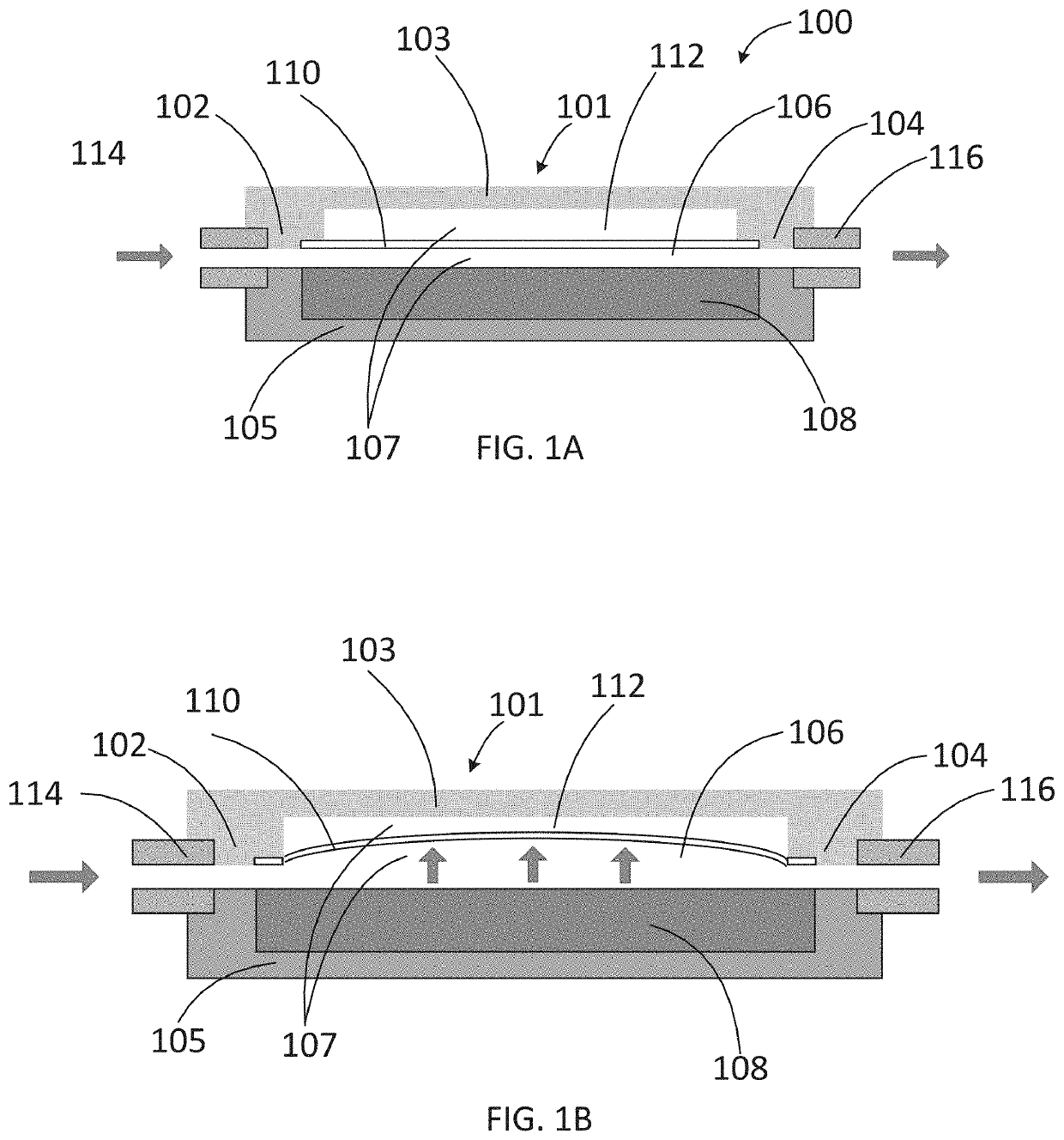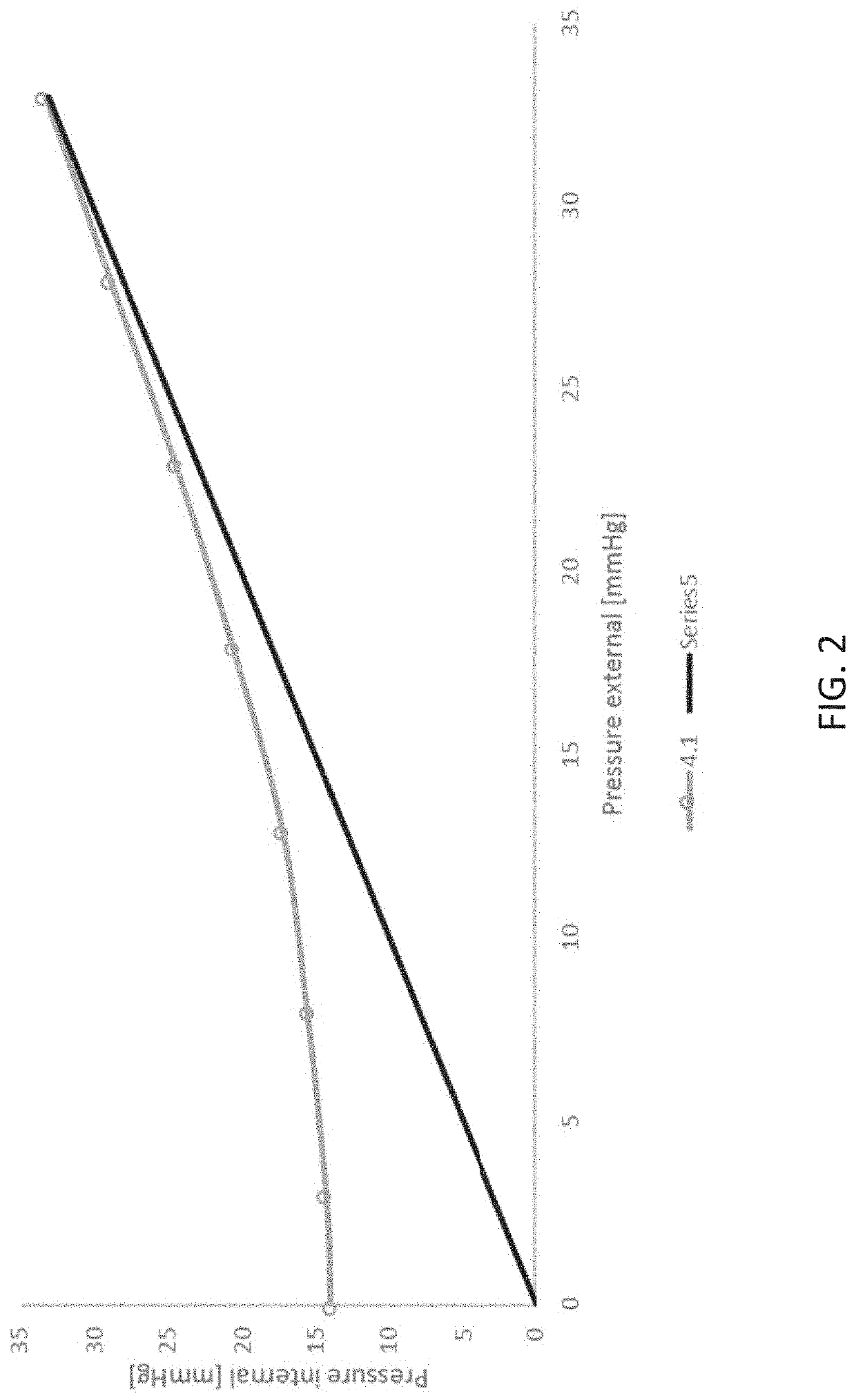Apparatus for treating excess intraocular fluid having an elastic membrane
a technology of intraocular fluid and apparatus, applied in the field of apparatus for draining excess intraocular fluid, can solve the problems of optic nerve, total blindness, loss of vision,
- Summary
- Abstract
- Description
- Claims
- Application Information
AI Technical Summary
Benefits of technology
Problems solved by technology
Method used
Image
Examples
Embodiment Construction
lass="d_n">[0041]In accordance with the principles of the present invention, an implantable device is provided for treating excessive intraocular pressure within an eye. In a preferred embodiment, the implantable device includes a cavity and an elastic membrane disposed within the cavity, thereby creating a fluidic passageway through the device. The elastic membrane is self-regulating to control the flow of aqueous humor from an anterior chamber of the eye, through the passageway, to a sink outside the eye (e.g., a bleb formed under a scleral flap or the orbital fat space of the eye). In accordance with one aspect of the present invention, the implantable device includes an area of local constriction disposed within the cavity to reduce the area of the fluidic passageway to increase fluidic resistance of the flow of fluid through the passageway. In an alternative embodiment, the implantable device includes a circular-shaped passageway such that the elastic membrane is positioned aro...
PUM
 Login to View More
Login to View More Abstract
Description
Claims
Application Information
 Login to View More
Login to View More - R&D
- Intellectual Property
- Life Sciences
- Materials
- Tech Scout
- Unparalleled Data Quality
- Higher Quality Content
- 60% Fewer Hallucinations
Browse by: Latest US Patents, China's latest patents, Technical Efficacy Thesaurus, Application Domain, Technology Topic, Popular Technical Reports.
© 2025 PatSnap. All rights reserved.Legal|Privacy policy|Modern Slavery Act Transparency Statement|Sitemap|About US| Contact US: help@patsnap.com



